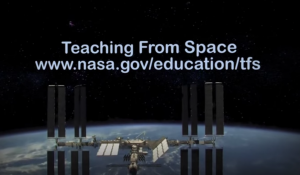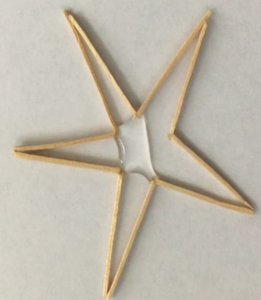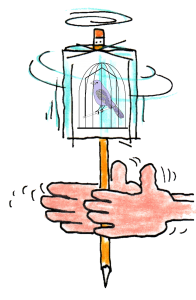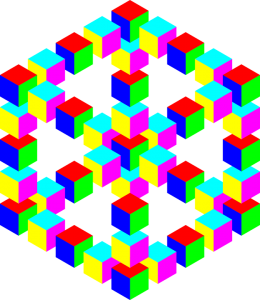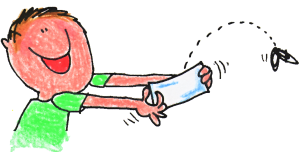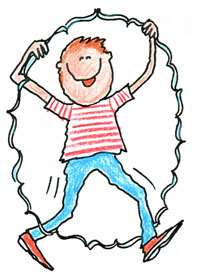Here’s an amazing resource I added to the Newton’s Laws web page – sixteen short videos posted by NASA that you’ll want to show your students. Each video introduces a common toy and demonstrates how it’s used on Earth and then on the International Space Station.
Need a few simple activities you can use if a lesson ends sooner than expected or when students have been really focused in class and have earned a fun reward? I’ve posted two products that use simple materials in my Teacher Pay Teacher stores: Simply Science and Simply Math. Use flat toothpicks and water to create Toothpick Stars. Several videos let you see the activity before you present it to students.  Arrange and then rearrange toothpicks to solve Toothpick Puzzles. Use small or full page images or a PowerPointâ„¢ presentation to display the thirty-two different puzzles. Arrange and then rearrange flat …
Use an optical illusion to extend your light or five senses unit. Print in color or have students color the images. Tape the paper to a pencil or straw, staple, and spin! Step-by-step directions and a short video make it easy to create a spinning illusion your students will love. Kids may want to draw their own illusions to share with classmates and family members. Does it matter if you spin slowly or quickly? What if you use dark colors, bright colors, or pale colors? Will you see the illusion better if you are close, holding it at arm’s length, or far …
Extend your unit on light into a study of optical illusions. Your visual kids will love it and your more capable or interested kids can be challenged to create new illusions. Here are a few resources to make it easy to add optical illusions to your science class. Optics 4 Kids – The Optical Society for great resources – Check out their activities! Easy Activities explore the basic concepts of light and color, suitable for five and older Medium Activities are recommended for scientists ten and older Advanced Activities are suggested for scientists fifteen and older Examples of Optical Illusions from …
Got a few minutes of class time? Want to amaze students with an activity that requires scrap paper and just two paper clips? Gently fold a piece of paper the size of a dollar bill (about 2.5″ x 6″) paper in thirds without creasing the paper. Use a paper clip to attach the top to the middle as shown. Use another paper clip to attach the bottom to the middle as shown. Turn the prepared paper so the paper clips are on top. Firmly grasp the paper on each side and point it away from you toward an open space in the classroom. …
Do you have a pile of scrap paper, scissors, and a few minutes for a quick science demonstration? Challenge students to figure out a way to walk through the paper. If you have any students familiar with the activity caution them to explain after the demonstration. They might have a variation to share like a spiral cut or be able to help classmates with the activity! Fold a sheet of paper in half along the dashed line and then make the vertical cuts along the solid lines. Cut the center section of the fold itself along the heavy solid line. …
A science lesson doesn’t have to take 40 minutes or even several sessions of 40 minutes. It needs to be focused on the science you’re presenting, be interesting, and, of course, be fun! I’m teaching inertia and gravity in a fifth grade classroom. Between my 40 minute classes I want to keep students interested and talking about the topic. I could use a few short demonstrations to review or reinforce inertia and gravity. Do you have a meter stick? Try this Center of Gravity demonstration. Do you have a large glob of clay to add to the meter stick? Try this Balancing …
